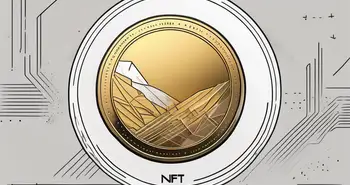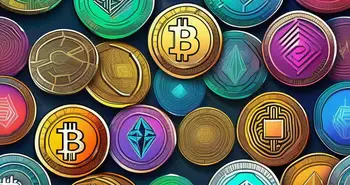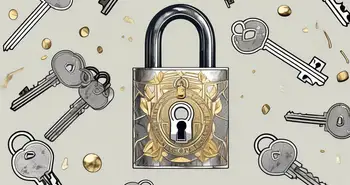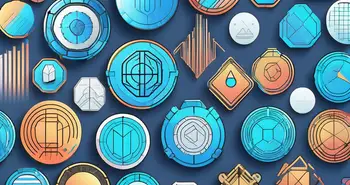Navigating ERC 6551: Insights and Implications

As an expert in blockchain technology, I am excited to share with you everything you need to know about ERC 6551. This groundbreaking Ethereum Request for Comment (ERC) defines a set of standards for the creation and implementation of non-fungible tokens (NFTs). NFTs have gained immense popularity in recent years, revolutionizing the way digital assets are bought, sold, and owned. In this article, we will delve into the basics of ERC 6551, explore its technical aspects, discuss its role in blockchain technology, and explore its future potential and challenges.
Understanding the Basics of ERC 6551
What is ERC 6551?
ERC 6551 is an Ethereum standard that provides guidelines for the creation and use of non-fungible tokens. Unlike cryptocurrencies such as Bitcoin or Ethereum, which are divisible and interchangeable, NFTs represent unique digital assets. These assets can include anything from artworks and collectibles to virtual real estate and even ownership rights in the physical world.
ERC 6551 builds upon the success of previous Ethereum Request for Comments (ERC) standards, such as ERC-20 and ERC-721, by focusing specifically on the unique characteristics and use cases of non-fungible tokens. This standardization ensures that NFTs created following ERC 6551 adhere to a set of common principles, making them easily recognizable and usable within the Ethereum ecosystem.
The Purpose of ERC 6551
The main purpose of ERC 6551 is to establish a standardized framework for NFTs, ensuring interoperability and compatibility across various applications and platforms. By defining common rules and functionalities, ERC 6551 enables seamless integration and interaction between different NFTs, allowing users to effortlessly trade, transfer, and utilize their digital assets in a decentralized manner.
Furthermore, ERC 6551 aims to enhance the security and trustworthiness of NFT transactions by providing clear guidelines for smart contract development and implementation. By promoting best practices and standardizing key aspects of NFT creation and management, ERC 6551 contributes to the overall stability and growth of the NFT market, fostering innovation and creativity in the digital asset space.
The Technical Aspects of ERC 6551
How ERC 6551 Works
ERC 6551 leverages the Ethereum blockchain to create and manage NFTs. Under this standard, each NFT is assigned a unique identifier known as a token ID, which distinguishes it from other tokens within the same collection. This token ID is stored on the blockchain, providing an immutable record of ownership and transaction history.
When a new NFT is minted, a smart contract is deployed on the Ethereum network. This smart contract contains the logic and rules for the NFT, including the required functions and metadata specified by ERC 6551. These functions allow for the minting of new tokens, transferring ownership between addresses, and querying token information.
One of the key aspects of ERC 6551 is its focus on metadata. Metadata refers to additional information about the NFT, such as its name, symbol, and URI. This metadata is crucial for the discovery and presentation of NFTs, as it provides context and details about the digital asset. By including metadata, creators can enhance the value and uniqueness of their NFTs, making them more appealing to collectors and enthusiasts.
Key Features of ERC 6551
ERC 6551 introduces several key features that enhance the functionality and usability of NFTs:
- Metadata Extension: ERC 6551 enables the inclusion of rich metadata, allowing creators to attach multimedia content, descriptions, and links to their NFTs, enhancing their value and uniqueness. This opens up endless possibilities for creators to express their artistic vision and provide additional context to their digital creations.
- Optional Access Controls: This standard provides flexibility for NFT creators to implement access controls, such as allowing or restricting certain operations based on specific conditions. For example, an NFT creator may choose to only allow transfers of their NFTs to addresses that meet certain criteria, ensuring the appropriate use and management of their digital assets.
- Batch Transfer: ERC 6551 allows for the efficient transfer of multiple NFTs in a single transaction. This feature not only reduces gas fees but also improves overall scalability in the Ethereum network. It enables users to perform bulk transfers, making it easier for collectors or marketplaces to manage and trade large quantities of NFTs.
- Enumeration: NFT collections conforming to ERC 6551 can be enumerated, enabling the iteration and enumeration of all the tokens within a collection. This simplifies the development of applications that require querying and processing large NFT collections. For example, an application could use enumeration to display all the NFTs in a collection, allowing users to browse and explore the different digital assets available.
With these key features, ERC 6551 provides a robust framework for the creation, management, and interoperability of NFTs on the Ethereum blockchain. It empowers creators to unleash their creativity, collectors to curate their digital collections, and developers to build innovative applications that leverage the unique properties of NFTs.
The Role of ERC 6551 in Blockchain Technology
ERC 6551, also known as the Non-Fungible Token (NFT) Standard, is a pivotal component in the realm of blockchain technology. This standard plays a crucial role in the implementation of smart contracts involving NFTs, which are unique digital assets that represent ownership of a specific item or piece of content. Smart contracts, powered by blockchain technology, are self-executing agreements that automatically execute predefined actions when specific conditions are met. By leveraging ERC 6551, developers can seamlessly integrate NFT functionality into smart contracts, enabling tokenized ownership of digital and physical assets, provable scarcity, and even fractional ownership.
ERC 6551 and Smart Contracts
When it comes to smart contracts, ERC 6551 enhances the capabilities of these agreements by enabling the creation and management of NFTs. These NFTs can represent a wide range of assets, including digital art, collectibles, virtual real estate, and more. By utilizing ERC 6551, developers can ensure that these NFTs are interoperable across different platforms and marketplaces, providing users with a seamless experience when buying, selling, and trading these unique digital assets.
ERC 6551's Impact on Blockchain Transactions
The adoption of ERC 6551 has revolutionized blockchain transactions and the broader digital economy. The standard's seamless transferability and ownership tracking have opened up new opportunities for creators, collectors, and investors alike. Artists can now tokenize their works, allowing for direct ownership transfer and the potential for ongoing royalties. On the other hand, collectors benefit from provable authenticity and ease of trading, creating vibrant marketplaces for digital assets. This surge in NFT adoption has not only empowered creators to monetize their creations in innovative ways but has also provided enthusiasts with new avenues to engage with and invest in digital content.
The Future of ERC 6551
Potential Developments in ERC 6551
The future of ERC 6551 and NFTs holds immense potential for innovation and expansion. We can expect to see advancements in areas such as decentralized finance (DeFi), gaming, virtual reality, and even real-world asset tokenization. As blockchain technology continues to evolve, ERC 6551 will likely be updated and improved to address emerging trends and meet the evolving needs of the digital economy.
Moreover, the integration of ERC 6551 with emerging technologies like artificial intelligence and Internet of Things (IoT) could open up new possibilities for NFT applications. Imagine AI-powered NFTs that can adapt to user preferences or IoT-connected NFTs that interact with physical objects in the real world, creating a seamless blend of digital and physical experiences.
Challenges and Opportunities for ERC 6551
While ERC 6551 and NFTs have experienced rapid growth and adoption, challenges and opportunities lie ahead. Scaling limitations, environmental concerns related to energy consumption, and the need for more robust standards are among the challenges that the industry must address. However, these challenges also present opportunities for collaboration and innovation, driving the development of sustainable and efficient solutions.
Furthermore, the intersection of ERC 6551 with regulatory frameworks and compliance standards will shape the future landscape of NFTs. Establishing clear guidelines for NFT creation, trading, and ownership can enhance trust and legitimacy in the ecosystem, paving the way for broader institutional adoption and mainstream integration.
Personal Advice: As an expert in NFTs, I always advise individuals and businesses considering venturing into this exciting space to thoroughly research and understand the projects and platforms they engage with. Due diligence and knowledge of the risks and opportunities are essential to make informed decisions and maximize the benefits of participating in the emerging NFT ecosystem.
Frequently Asked Questions About ERC 6551
How to Implement ERC 6551?
To implement ERC 6551, developers can utilize existing NFT libraries or directly write smart contracts conforming to the standard. By ensuring compliance with the defined functions and metadata, developers can create NFTs that are compatible with wallets, marketplaces, and other applications that support ERC 6551.
What are the Alternatives to ERC 6551?
While ERC 6551 is the leading standard for NFTs on the Ethereum blockchain, alternative standards exist on other blockchain platforms. For example, the Flow blockchain has its own NFT standard called Flow Fungible Token (Fungible Token Standard 1 or FTS-1), which is optimized for performance and scalability in the context of gaming and digital collectibles.
In conclusion, ERC 6551 has revolutionized the world of NFTs by providing standardized guidelines for their creation and use. This Ethereum standard ensures interoperability and compatibility, enabling the seamless transfer and ownership of unique digital assets. As the NFT ecosystem continues to evolve, we can expect ERC 6551 to play a pivotal role in shaping the future of blockchain technology.
As you explore the dynamic world of NFTs and ERC 6551, consider taking your trading experience to the next level with Morpher. Our innovative platform extends beyond the traditional, offering you the ability to trade NFTs alongside a diverse range of asset classes, all with zero fees and infinite liquidity. Embrace the power of fractional investing, short selling, and up to 10x leverage to amplify your trades on a secure, user-centric platform built on the Ethereum blockchain. Sign Up and Get Your Free Sign Up Bonus today to transform your investing journey with Morpher.

Disclaimer: All investments involve risk, and the past performance of a security, industry, sector, market, financial product, trading strategy, or individual’s trading does not guarantee future results or returns. Investors are fully responsible for any investment decisions they make. Such decisions should be based solely on an evaluation of their financial circumstances, investment objectives, risk tolerance, and liquidity needs. This post does not constitute investment advice.

Painless trading for everyone
Hundreds of markets all in one place - Apple, Bitcoin, Gold, Watches, NFTs, Sneakers and so much more.

Painless trading for everyone
Hundreds of markets all in one place - Apple, Bitcoin, Gold, Watches, NFTs, Sneakers and so much more.









